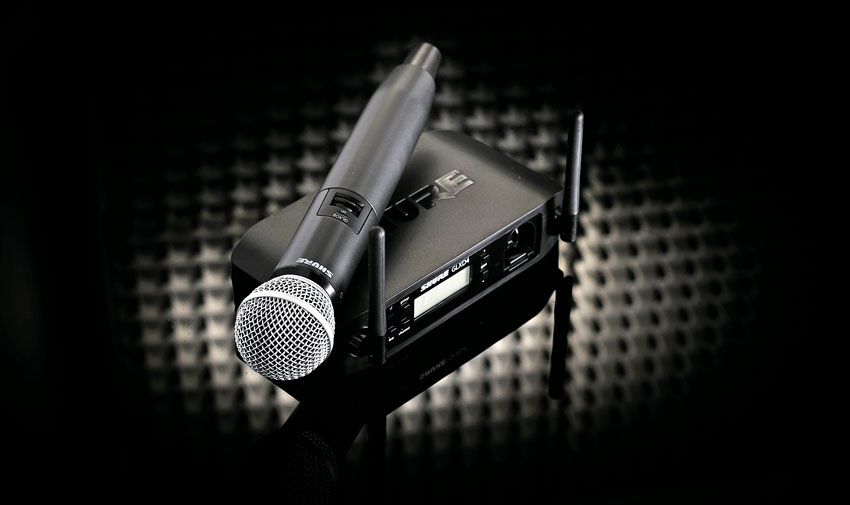MusicRadar Verdict
A simple but well spec'd Shure system for semi-pro to basic pro level at a reasonable price.
Pros
- +
Classic mic capsules. Automatic set-up. Seamless frequency hopping.
Cons
- -
We only managed half the claimed range. The receiver is light.
MusicRadar's got your back
Even if you're buying at the less expensive part of the range, with a brand like Shure you know that the essence of all the high-end research and development and years of experience is right there, in this case, in the palm of your hand.
Crossed wires... Choosing a wireless mic is complicated. Analogue? Digital? True diversity? To choose well you need to know your budget and needs.
Budget's easy. How much can you afford? Working out your needs requires a few questions, however, for example: What's the required range? Will it be the only system in use? Will there be line of sight? Is security an issue? What countries will you be wanting to use the system in? Do you need a transmitter add-on to your existing mic?
"The range is claimed to be 60m (200ft), and you can use a maximum of eight systems together"
We're looking at Shure's GLXD2 (transmit) and GLXD4 (receive) system. These mics are tried and tested so we don't need to discuss them other than to say there are four capsule options: SM58, BETA58, SM87 and BETA87A (as well as lavalier and bodypack options).
The barrel of the mic doesn't taper like a '58, and is two-thirds longer, feeling big, but also solid and well-made. It has a safely recessed on/ off switch and very bright green LED to tell you that it's on and all is good.
It digitally operates at 2.4GHz (unlicensed and globally available, but sharing with Wi-Fi, Bluetooth and microwave ovens) with a true diversity receiver (two antennas on the receive box to eliminate 'dead' transmission spots) and a seamless frequency-hopping system (to automatically jump frequency if Wi-Fi, Bluetooth or microwave ovens try to join in with the singer).
The range is claimed to be 60m (200ft), and you can use a maximum of eight systems together, though five is safer in terms of frequency availability.
Want all the hottest music and gear news, reviews, deals, features and more, direct to your inbox? Sign up here.
In action
The transmitter uses a rechargeable battery offering 16 hours of battery life and the display on the receiver tells you exactly what's left. The battery can be charged in situ via a USB cable or by slotting into the receiver. A spare can be charging while the mic is in use. This will save you a fortune in batteries. In case of emergency, a 15 minute charge will give you an hour and a half runtime.
"Using the combo is a breeze. Turn on the receiver, switch on the mic, and the two units handshake immediately"
It's features and 'in the field' skills like this that show Shure's experience in this game and inspire true confidence to the user. And using the combo is a breeze. Turn on the receiver, switch on the mic, and the two units handshake immediately.
However, with the studio Wi-Fi, Bluetooth and some 'stagey' physical obstructions, I only got 20m away before the signal fully disintegrated. This improved to about 30m with clear line of sight. Fine for most applications, but nevertheless only half as good as the Shure's specs.
Possible improvements? The receiver is so light that you're worried the weight of an cable hanging out the back might drag it stage-wards. So best pop a pint on the top.
This is a solid system for semi-pro to basic pro level. If it's multiple set-ups, RF analysis software, or remote control of transmitter functions you need then go for the costly Axient range. The GLXD meanwhile delivers a simple, solid, and well thought-out system at a reasonable price.
We would recommend it for use in simpler 'line-of-sight' set-ups, where the killer combo of classic SM58 performance and problem dodging circuitry make a foolproof and trusty tool.
